
漢德百科全書 | 汉德百科全书
Im Achtzigjährigen Krieg (auch Spanisch-Niederländischer Krieg) von 1568 bis 1648 erkämpfte die Republik der Sieben Vereinigten Niederlande ihre Unabhängigkeit von der spanischen Krone. Mit seinem Ende schieden die nördlichen Niederlande zugleich aus dem Verband des Heiligen Römischen Reichs Deutscher Nation aus. Der südliche Teil der Niederlande blieb dagegen bei Spanien. Im 19. Jahrhundert ging daraus Belgien hervor. Die Niederlande wurden damit dauerhaft geteilt.
Der Krieg entwickelte sich aus einem Aufstand gegen den spanischen Landesherrn Philipp II., der vor allem von Calvinisten ausging. Nachdem die Spanier den ersten Aufstand noch niedergeschlagen hatten, entwickelte sich ab 1572 ein zweiter Aufstand, der nach und nach das ganze Land erfasste. Nach einem zwölfjährigen Waffenstillstand von 1609 bis 1621 wurde der Krieg bis 1648 weitergeführt, als Spanien die Unabhängigkeit der nördlichen Niederlande im Westfälischen Frieden offiziell anerkannte.


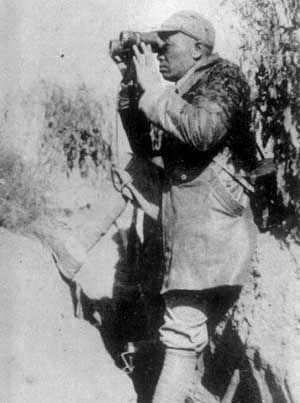


05.12.1940 die 百团大战 Hundert Regimenter Kampagne zwischen der kaiserlichen japanischen Armee und der chinesischen roten Armee im Zweiten Japanisch-Chinesischen Krieg, geht mit einem chinesischen Sieg zu Ende. Es ist der größte Sieg für die chinesische rote Armee in diesem Krieg

Als Hundertjähriger Krieg (frz. La guerre de Cent Ans, engl. Hundred Years’ War) wird die Zeit von 1337 bis 1453, bezogen auf den zu dieser Zeit herrschenden bewaffneten anglofranzösischen Konflikt sowie den sich daran anschließenden französischen Bürgerkrieg der Armagnacs und Bourguignons, bezeichnet.
Den Hintergrund der andauernden Kämpfe bildeten
- ein lehensrechtlicher Streit um die Besitzungen und die Rolle der englischen Könige als Herzöge von Aquitanien im Königreich Frankreich,
- der sich daran anschließende Streit um die Thronfolge in Frankreich zwischen dem englischen König Edward III. (Haus Plantagenet) und dem französischen König Philippe VI. (Haus Valois) sowie
- ein innerfranzösischer Konflikt um Macht und Einfluss zwischen den Parteien der Bourguignons und der Armagnacs.
Letzten Endes waren es die Valois’, die siegreich aus der langjährigen Auseinandersetzung hervorgingen.
Der Hundertjährige Krieg trug entscheidend zur endgültigen Herausbildung eines eigenen Nationalbewusstseins sowohl bei den Franzosen als auch bei den Engländern bei, wie auch zu einer abschließenden Aufspaltung von Frankreich und England in zwei separate Staatswesen.
百年战争(英语:Hundred Years' War;法语:Guerre de Cent Ans)是1337年至1453年期间,发生在金雀花王朝治下的英格兰王国和瓦卢瓦王朝治下的法兰西王国之间,针对法兰西王国统治权的战争。
这是中世纪最引人注目的战争,这场战争既导致了骑士精神的兴起,也导致了其之后的衰落。另一方面,它也帮助英法两个国家发展出了强烈的民族意识。它是世界最长的战争之一[1],长达116年,历经五代统治者,最后由法方胜出。
英法两国间的紧张局势可以追根溯源至英格兰皇室的出身。英格兰王室是来自法兰西之诺曼底的诺曼人。因此,英格兰的统治者历来不仅仅只继承着英格兰的王位,同时也继承着诺曼底公国的公爵头衔和相应的土地,但对法兰西土地的拥有让他们成了法兰西的附庸。在百年战争中,如何判定英格兰国王位于法兰西的封地是他们冲突的核心。法兰西想尽办法,试图剥离英格兰在法兰西的封地,尤其是当英格兰在与苏格兰交战时。因此,久而久之,英格兰在法兰西的领土发生了很多变化,到了1337年,只有加斯科涅仍然留在他们手中。
1316年,法兰西否决了女性对王位的继承权。1328年,法兰西国王查理四世死后绝嗣,与他血缘关系最接近的男性是他的外甥,来自英格兰的爱德华三世,伊莎贝拉的儿子。因此,伊莎贝拉为他的儿子宣称了法兰西的王位的继承权,但遭到了法兰西人的拒绝,并坚称她不能将她所不拥有的权利转给她的儿子。法兰西人在政治上更青睐一位法兰西人取得王位,而非一个外国的王子。最后,王位被传给了瓦卢瓦伯爵腓力,也就是后来的腓力六世,法国瓦卢瓦王朝的开国之君。英格兰人本就不指望他们对王位的宣称能带来成功,当最后失败时,也没把这件事太放在心上。但是,菲利普和爱德华之间的分歧促使前者没收了后者在法兰西的土地,这反过来刺激了爱德华,令他再次强调了对法兰西王位的继承权。
在百年战争中,几场压倒性的胜利,比如克雷西会战、普瓦捷战役、阿金库尔战役,令英格兰看起来形势大好,因此其在接下来的数十年中不断投入财力物力。但是,资源更雄厚的法兰西王室阻止了英格兰国王的全面征服。从1429年起,法兰西的取得的决定性胜利,比如奥尔良之围、帕提战役、福尔米尼战役、卡斯蒂隆战役,令英格兰失去了他们在欧洲大陆上大部分的领土,胜利的天平最终向法兰西倾斜。
百年战争具有多方面的历史意义。战争结束后,封建的陆军被大范围地取代为职业的兵团,贵族的统治屈从于军队的人力和武器带来的民主。虽然这是两个王室间的冲突,但战争也给英格兰人和法兰西人的民族主义带来了冲击。不少新的战术和武器也因此战而发明。
百年戦争(ひゃくねんせんそう、英語: Hundred Years' War、フランス語: Guerre de Cent Ans)は、フランス王国の王位継承およびイングランド王家がフランスに有する広大な領土をめぐり、フランス王国を治めるヴァロワ朝と、イングランド王国を治めるプランタジネット朝およびランカスター朝というフランス人王朝同士の争いに、フランスの領主たちが二派に分かれて戦った内戦である。国家という概念は薄い時代であり、封建諸侯の領地争いが重なったものであったが、戦争を経て次第に国家・国民としてのアイデンティティーが形成されるに至った[8]。現在のフランスとイギリスの国境線が決定した戦争でもある。百年戦争は19世紀初期にフランスで用いられるようになった呼称で、イギリスでも19世紀後半に慣用されるようになった。
伝統的に1337年11月1日のエドワード3世によるフランスへの挑戦状送付から1453年10月19日のボルドー陥落までの116年間の対立状態を指すが、歴史家によっては、実際にギュイエンヌ、カンブレーにおいて戦闘が開始された1339年を開始年とする説もある。いずれにしても戦争状態は間欠的なもので、休戦が宣言された時期もあり、終始戦闘を行っていたというわけではない。
両国とも自国で戦費を賄うことができなかった。フランスはジェノヴァ共和国に、イングランドはヴェネツィア共和国に、それぞれ外債を引き受けさせた。
The Hundred Years' War was a series of conflicts waged from 1337 to 1453 by the House of Plantagenet, rulers of the Kingdom of England, against the French House of Valois, over the right to rule the Kingdom of France. Each side drew many allies into the war. It was one of the most notable conflicts of the Middle Ages, in which five generations of kings from two rival dynasties fought for the throne of the largest kingdom in Western Europe. The war marked both the height of chivalry and its subsequent decline, and the development of strong national identities in both countries.
Tensions between the crowns of France and England can be traced back to the origins of the English royal family itself, which was French (Norman, and later, Angevin) in origin. For this reason, English monarchs had historically held not only the English Crown, but also titles and lands within France, the possession of which made them vassals to the kings of France. The status of the English King's French fiefs was a major source of conflict between the two monarchies throughout the Middle Ages. French monarchs systematically sought to check the growth of English power, stripping away lands as the opportunity arose, particularly whenever England was at war with Scotland, an ally of France. Over the centuries, English holdings in France had varied in size, at some points dwarfing even the French royal domain; by 1337, however, only Gascony was left to the English.
In 1316, a principle was established denying women succession to the French throne (later retroactively attributed to the ancient Salic law). In 1328, Charles IV of France died without sons or brothers. His closest male relative was his nephew Edward III of England, whose mother, Isabella of France, was sister of the deceased King. Isabella claimed the throne of France for her son, but the French rejected it, maintaining that Isabella could not transmit a right she did not possess. Furthermore, political sentiment favoured a Frenchman for the crown rather than a foreign prince. The throne passed instead to Philip, Count of Valois, a patrilineal cousin of Charles IV, who would become Philip VI of France, the first king of the House of Valois. The English had not expected their claim to meet with success, and did not press the matter when it was denied. However, disagreements between Philip and Edward induced the former to confiscate the latter's lands in France, and in turn prompted Edward III to reassert his claim to the French throne.
Several overwhelming English victories in the war—especially at Crécy, Poitiers, and Agincourt—raised the prospects of an ultimate English triumph, and convinced the English to continue pouring money and manpower into the war over many decades. However, the greater resources of the French monarchy prevented the English kings from ever completing the conquest of France. Starting in 1429, decisive French victories at Orléans, Patay, Formigny, and Castillon concluded the war in favour of the House of Valois, with England permanently losing most of its possessions on the continent.
Historians commonly divide the war into three phases separated by truces: the Edwardian War (1337–1360), the Caroline War (1369–1389), and the Lancastrian War (1415–1453). Local conflicts in neighbouring areas, which were contemporarily related to the war, including the War of the Breton Succession (1341–1365), the Castilian Civil War (1366–1369), the War of the Two Peters (1356–1369) in Aragon, and the 1383–85 crisis in Portugal, were availed by the parties to advance their agendas. Later historians adopted the term "Hundred Years' War" as a historiographical periodisation to encompass all of these events, thus constructing the longest military conflict in European history.
The war owes its historical significance to multiple factors. By its end, feudal armies had been largely replaced by professional troops, and aristocratic dominance had yielded to a democratisation of the manpower and weapons of armies. Although primarily a dynastic conflict, the war gave impetus to ideas of French and English nationalism. The wider introduction of weapons and tactics supplanted the feudal armies where heavy cavalry had dominated, and artillery became important. The war precipitated the creation of the first standing armies in Western Europe since the time of the Western Roman Empire, thus helping to change their role in warfare. With respect to the belligerents, in France, civil wars, deadly epidemics, famines, and bandit free-companies of mercenaries reduced the population drastically. In England, political forces over time came to oppose the costly venture. The dissatisfaction of English nobles, resulting from the loss of their continental landholdings, as well as the general shock at losing a war in which investment had been so great, became factors leading to the Wars of the Roses (1455–1487).
La guerre de Cent Ans est un conflit entrecoupé de trêves plus ou moins longues, opposant de 1337 à 1453 la dynastie des Plantagenêt à celle des Valois, et à travers elles le royaume d'Angleterre et celui de France.
Au début du XIVe siècle, trois axes de tensions favorisent son émergence :
- la « grande dépression médiévale », théorisée par Guy Bois (crise démographique conjuguée à une stagnation économique du fait de l'alourdissement de la pression fiscale seigneuriale) ;
- les constants affrontements entre Plantagenêt et Capétiens pour la souveraineté et le contrôle des fiefs de Guyenne ;
- le conflit dynastique pour la couronne de France qui naît en 1328 à la mort de Charles IV, dernier fils de Philippe IV.
La guerre connaît plusieurs phases. L'Angleterre remporte d'abord de nombreuses victoires, avant que la France ne reprenne l'ascendant à partir de 1364 ; en 1378, les Anglais ne contrôlent ainsi plus que quelques villes sur le continent. À compter de 1380, l'affaiblissement du pouvoir royal, conjugué à un contexte économique difficile, conduit à une période de guerre civile dans les deux pays, situation dont le royaume d'Angleterre est le premier à sortir. Henri V d'Angleterre profite alors de la folie du roi Charles VI de France et de la guerre civile entre Armagnacs et Bourguignons pour relancer le conflit. Fort de son alliance avec les Bourguignons, il obtient la couronne de France pour son fils Henri VI par le traité de Troyes signé en 1420. Cependant, le sentiment national naissant et la modification des circuits économiques rendent difficile le maintien des Anglais en France. En 1429, l'épopée de Jeanne d'Arc marque les esprits tout en renforçant la légitimité de Charles VII. Six ans plus tard, celui-ci conclut la paix d'Arras avec le duc de Bourgogne ; les Anglais sont dès lors inexorablement repoussés — notamment avec la reprise de Paris en 1436 par le connétable Arthur de Richemont — et ne contrôlent plus en 1453 que Calais sur le continent (qui ne sera reprise par la France qu'en 1558), la paix étant signée en 1475 (traité de Picquigny).
Sur le plan démographique, les batailles ont fait peu de morts en dehors de la noblesse, mais les pillages ont eu des conséquences néfastes sur les populations civiles. Du point de vue militaire, cette guerre marque une rupture, avec le déclin de la cavalerie au profit de l’infanterie et l'apparition de l’artillerie. Ce conflit voit également l'apparition durable de l'emploi de troupes mercenaires dans chacun des camps en présence1. Elle a également des conséquences économiques, l'augmentation des prix favorisant le commerce à longue distance, et religieuses, avec le grand schisme d'Occident qui oppose les papes de Rome et d'Avignon. Elle aboutit à une affirmation du sentiment national, la rivalité franco-anglaise n'étant plus dorénavant seulement issue d'un conflit dynastique. De la même manière, la mutation du duché de Bourgogne en principauté indépendante génère un conflit de deux siècles avec les Habsbourg.
La guerra dei cent'anni[1] fu un conflitto tra il Regno d'Inghilterra e il Regno di Francia che durò, con varie interruzioni, centosedici anni, dal 1337 al 1453. Si concluse con l'espulsione degli inglesi da tutti i territori continentali fatta eccezione per la cittadina di Calais, conquistata dai francesi solo nel 1558. Nel processo di formazione dello Stato unitario francese, già avviatosi sotto i primi re Capetingi, rappresentò una lunga pausa, ma alla sua conclusione la Francia aveva sostanzialmente raggiunto l'assetto geopolitico moderno.[2]
Il conflitto fu costellato da tregue più o meno brevi e interrotto da due periodi di vera e propria pace della durata rispettivamente di 9 e 26 anni che lo dividono così in tre fasi principali: la guerra edoardiana (1337-1360), la guerra carolina (1369-1389) e la guerra dei Lancaster (1415-1429), alle quali deve essere aggiunta la fase conclusiva della guerra (1429-1453). Tale suddivisione è tipica della storiografia anglosassone, mentre altre periodizzazioni, in particolare quella francese, prevedono una prima (1337-1389) ed una seconda fase (1415-1453).
Dal punto di vista militare in questo periodo vennero introdotte nuove armi e nuove tattiche che segnarono la fine degli eserciti organizzati su base feudale e incentrati sulla forza d'urto della cavalleria pesante. Sui campi dell'Europa occidentale videro la luce gli eserciti professionali, scomparsi dai tempi dell'Impero romano. Si trattò, ancora, del primo conflitto in cui si impiegarono in Europa le armi da fuoco, in particolare le bombarde, utilizzate per la prima volta ad opera degli inglesi nel corso della battaglia di Crécy.
La straordinaria importanza della guerra dei cent'anni, per quanto attiene la storia dell'Europa nel suo complesso, è evidenziata dal fatto che la sua fine (1453, anno che vide pure la caduta di Costantinopoli) è una delle date convenzionalmente poste dalla storiografia moderna a conclusione del Medioevo europeo.[3]
La guerra de los Cien Años (en francés: Guerre de Cent Ans; en inglés: Hundred Years' War) fue un conflicto armado entre los reinos de Francia e Inglaterra, que duró 116 años (24 de mayo de 1337 -19 de octubre de 1453)6789 de raíz feudal, pues su propósito era resolver quién controlaría las enormes posesiones acumuladas por los monarcas ingleses desde 1154 en territorios franceses, debido al ascenso al trono inglés de Enrique II Plantagenet, conde de Anjou. Se saldó con la retirada inglesa de tierras francesas.
Столе́тняя война́ (фр. Guerre de Cent Ans, англ. Hundred Years' War) — серия военных конфликтов между Английским королевством и его союзниками, с одной стороны, и Францией и её союзниками, с другой, длившихся примерно с 1337 года по 1453 год. Поводом к этим конфликтам являлись притязания на французский престол английской королевской династии Плантагенетов, стремящейся вернуть территории на континенте, ранее принадлежавшие английским королям. Так как Плантагенеты были связаны узами родства с французской династией Капетингов, у английских королей были немалые шансы заполучить французский престол. Франция, в свою очередь, стремилась вытеснить англичан из Гиени, которая была закреплена за ними Парижским договором 1259 года, и сохранить своё влияние во Фландрии. Феодалы же тех или иных государств, принимавших участие в серии военных конфликтов, желали заполучить богатства своих противников, а также славу и благородство. Несмотря на сокрушительные победы в начальных этапах, Англия так и не смогла добиться своей цели, а в результате войны на континенте у неё остался лишь порт Кале, который она удерживала до 1558 года.
Война продолжалась 116 лет (с перерывами). Строго говоря, это была скорее серия военных конфликтов:
- 1. Эдвардианская война — в 1337—1360 годах.
- 2. Каролингская война — в 1369—1396 годах.
- 3. Ланкастерская война — в 1415—1428 годах.
- 4. Завершающий период — в 1428—1453 годах.
Термин «Столетняя война» как обобщающее для этих конфликтов название появился позже. Начавшись с династического конфликта, война впоследствии приобрела национальный оттенок в связи с оформлением английской и французской наций. В связи с многочисленными военными столкновениями, эпидемиями, голодом и убийствами население Франции в результате войны сократилось на две трети[1]. С точки зрения военного дела, в ходе войны появились новые виды оружия и военной техники, в первую очередь артиллерия, были разработаны новые тактические и стратегические приёмы, разрушавшие основы старых феодальных армий. В частности, появились первые постоянные армии.





Die Allianz zwischen der Sowjetunion, der KP Chinas und der Guomindang beschließt die 北伐战争 Nordexpedition mit dem Ziel, China unter der Flagge der Guomindang zu vereinen und die Herrschaft der örtlichen Kriegsfürsten zu beenden


比科卡会战(意大利语:Battaglia della Bicocca)是一场发生于1522年4月27日,意大利战争中的战斗,法国军队(主要是瑞士雇佣兵)在比科卡向神圣罗马帝国的营地发动进攻,但防守者事先做好了充分的准备,包括建立了一道胸墙作为工事,最后成功地使用火枪结合长矛的战术打败了进攻者,令进攻者损失3,000人左右。
Die Schlacht bei Bicocca war eine Schlacht am 27. April 1522 zwischen den Truppen des französischen Königs Franz I. und Kaiser Karls V. in Bicocca nördlich von Mailand (seit 1923 als Stadtquartier eingemeindet).
Die französischen und venezianischen Truppen unter dem Befehl von Odet de Foix wurden von der spanisch-kaiserlichen und päpstlichen Armee unter dem Befehl von Prospero Colonna geschlagen. Odet de Foix musste sich aus der Lombardei zurückziehen, das Herzogtum Mailand geriet unter die Herrschaft des Kaisers.


波苏战争或苏波战争(波兰语:Wojna polsko-bolszewicka;俄语:Сове́тско-по́льская война́;1919年2月—1921年3月)是第一次世界大战结束后,在苏维埃俄国与波兰第二共和国这两个新成立的政权之间进行的一场战争。战争是由两国对扩张领土和扩大影响力的企图所引起。
Im Polnisch-Sowjetischen Krieg (russisch Советско-польская война/ Transkription: Sowetsko-polskaja woina, ukrainisch Польсько-радянська війна Polsko-radjanska wijna), auch Polnisch-Bolschewistischer Krieg genannt (polnisch Wojna polsko-bolszewicka), von 1919 bis 1921 versuchte einerseits das 1918 wiedererrichtete Polen, im Osten den historischen Grenzverlauf von 1772 wiederherzustellen und eine osteuropäische Konföderation (→ Międzymorze) unter polnischer Führung zu schaffen. Das sich noch im Bürgerkrieg befindende Sowjetrussland war andererseits bestrebt, seinen Einflussbereich in den Westen auszudehnen. In der Ukraine wurde Polen von nationalistischen Kräften unterstützt, die zuvor von den Bolschewiki von der Macht vertrieben worden waren.




 History
History


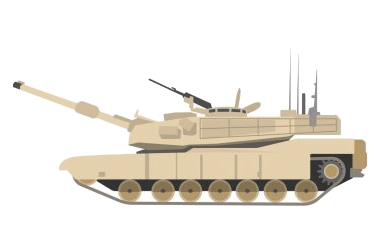
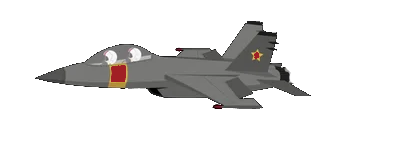
 Military, defense and equipment
Military, defense and equipment
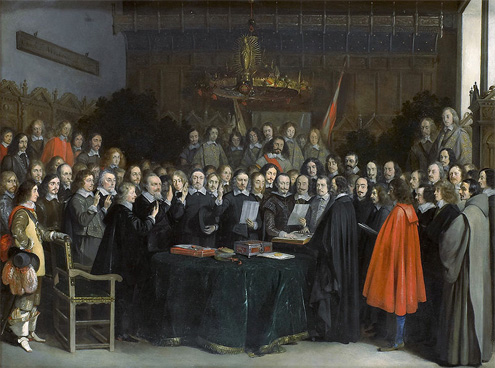


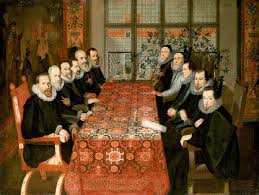
 Review
Review